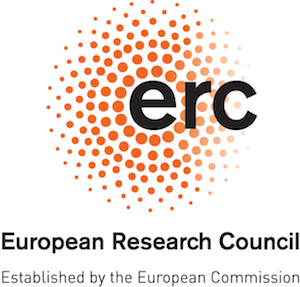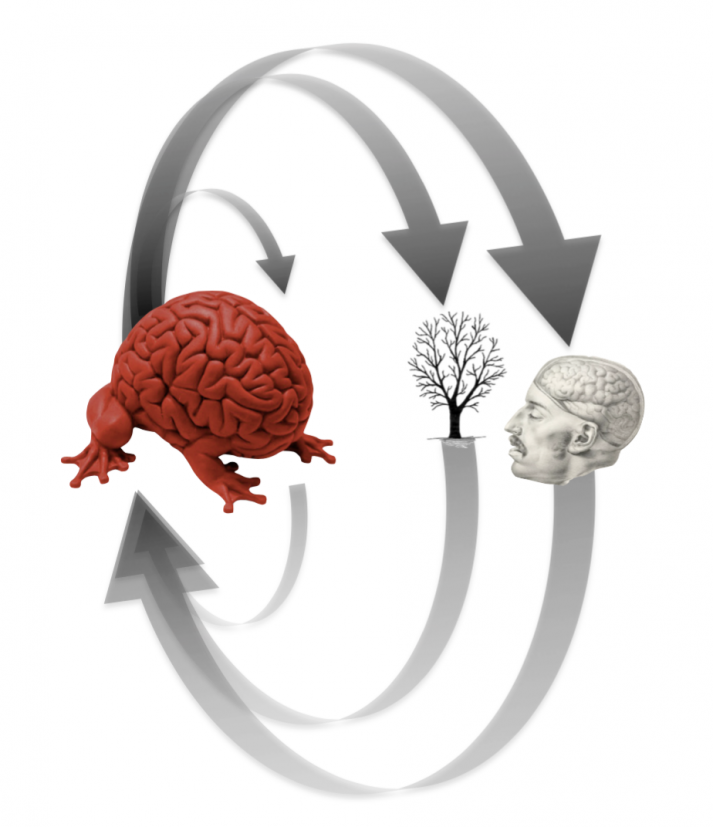Radical Plasticity
The lab currently benefits from an ERC Advanced Grant titled "Consciousness: The Radical Plasticity Thesis"

Here is the plan:
Consciousness — what it feels like to have experiences — is undoubtedly one of the most important scientific problems today. Here, we adopt a resolutely dynamical perspective on consciousness, suggesting that rather than being a single static property associated with some neural states and not others, it is instead extended both in space and in time. This mandates an experimental approach focused on the dynamics of change, at different time scales. Theoretically, we suggest that consciousness arises as a result of the brain’s continuous attempts at predicting not only the consequences of action on the world and on other agents, but also the consequences of activity in one cerebral region on activity in other regions. By this account, the brain continuously and unconsciously learns to redescribe its own activity to itself, so developing systems of metarepresentations that characterize and qualify their target representations. Such redescriptions form the basis of conscious experience, and also subtend successful control of action. In a sense thus, this is the enactive perspective, but turned both inwards and further outwards. From this perspective, consciousness amounts to “signal detection on the mind”; it is the brain’s (non-conceptual, embodied, implicit) theory about itself. By this hypothesis, which we call the "Radical Plasticity Thesis", consciousness critically depends on a cognitive system’s ability to learn about (1) the effects of its actions on the environment, (2) the effects of its actions on other agents, and on (3) the effects of activity in one cerebral region on other cerebral regions.

On this view, the extent to which a representation is conscious depends in a graded manner on (1) properties such as its stability in time, its strength, and its distinctiveness and on (2) the existence of metarepresentations that redescribe the system’s representations to itself. Crucially, these properties accrue as a result of learning and plasticity processes, which are in turn viewed as mandatory processes that always accompany information processing. Thus, the core idea is that a cognitive system becomes a conscious cognitive system in virtue of its ability to continuously learn to represent (and hence, predict) the consequences of its own activity. To explore this hypothesis, we propose a research program that leverages the methods of cognitive psychology, of cognitive neuroscience, and of computational modeling to jointly address four key hypotheses: (1) Consciousness depends on quality of representation, (2) Consciousness depends on metarepresentations, (3) Consciousness depends on theory of mind, and (4) Consciousness depends on learning. The overarching goal of the project is to characterize the computational principles that differentiate conscious from unconscious cognition, based on a bold, original, and innovative theory about the role that neural plasticity and learning play in consciousness.
Key players:
Relevant publications:
Cleeremans, A. (2011). The Radical Plasticity Thesis: How the brain learns to be conscious. Frontiers in Psychology, 2, 1-12. link
- Anzulewicz, A., Asanowicz, D., Windey, B., Paulewicz, B, Wierzchon, M., & Cleeremans, A. (2015). Does level of processing affect the transition from unconscious to conscious perception? Consciousness and Cognition, 36, 1-11. PDF
- Caspar, E., Cleeremans, A., & Haggard, P. (2015). The relationship between human agency and embodiment. Consciousness & Cognition, 33, 226-236. PDF
- Timmermans, B., & Cleeremans, A. (2015). How can we measure awareness? An overview of current methods. In M. Overgaard (Ed.), Behavioural Methods in Consciousness Research, Oxford: Oxford University Press, pp. 21-46. PDF
- De Loof, E., Poppe, L., Cleeremans, A., Gevers, W., & Van Opstal, F. (2015). Different effects of executive and visuospatial memory on visual consciousness. Attention, Perception & Psychophysics, 1-6. PDF